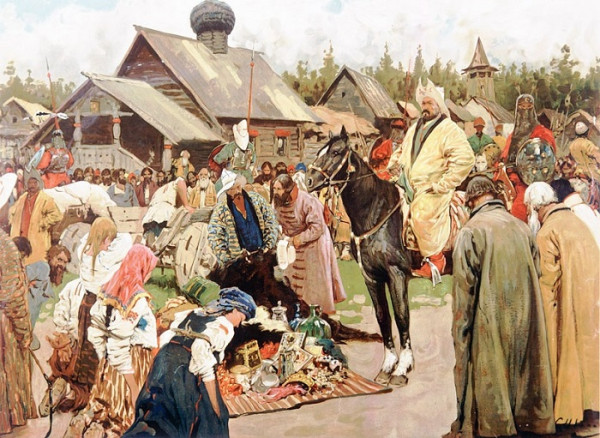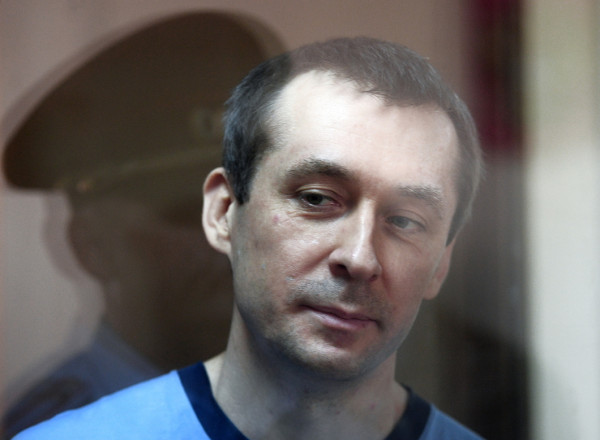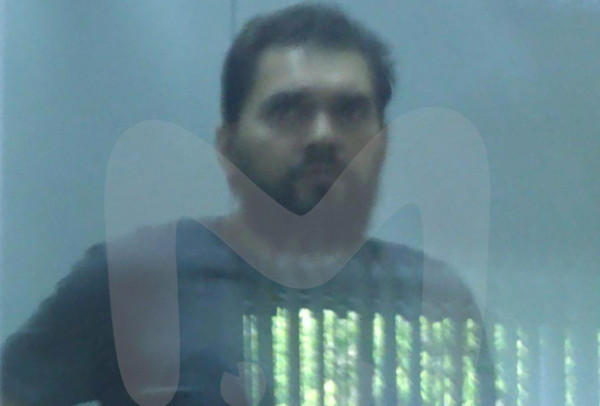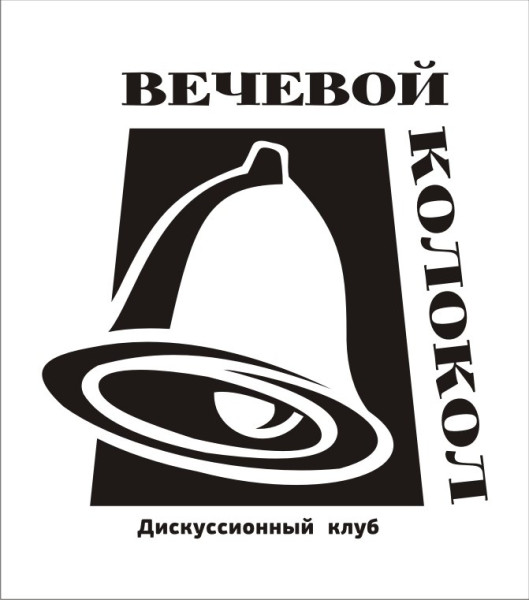History: how the Moscow princes made money by collecting tribute for the Golden Horde

В In the first decades after the conquest of Rus', the Horde conducted a census of the local population and established a tax of 10% of the income of Russians. There were also separate taxes on plowing land, on bridges, on the maintenance of Tatar officials, and one-time military payments. In general, they accounted for up to 20% of income. Tribute was first collected by the Horde Baskaks, and in the mid-14th century the monopoly on collecting taxes from all over Rus' was given to Moscow. The Moscow princes kept 6-12% of the collected tribute, and this allowed them to centralize Rus'.
What the taxes were and their magnitude, why Moscow rose during the yoke is described in the book of the German historian, orientalist, Turkologist, specialist in the history of the Mongols Berthold Spuhler, “The Golden Horde. Mongols in Rus'. 1223-1502”, Tsentrpoligraf publishing house, 2017. For informational purposes, we provide excerpts from a book on this topic.
Amount of taxes
The Tatars of the Golden Horde received the largest amount of tribute from Rus', although sometimes it was lower compared to what the Ilkhans had in Iran. For example, in 1384, each Russian village paid half a ruble, or half a ruble, which was a significant amount. Without this financial support, the Horde's economy simply would not have been able to develop.Initially, in Rus', as well as in Iran, the collection of tribute took place in an unorganized manner. Guyuk and Batu simply sent a “Saracin” (Arab official) to Russian villages, who greatly inflated the amount of payments, collecting tribute in various, mainly in-kind, forms. Payments in kind consisted of the skins of bears, black beavers, sables, black-brown foxes and other goods. Insolvent people were driven into slavery. In 1237, Tatar tribute collectors demanded that tithes and all horses be given to them in Ryazan.
Such arbitrariness, which occurred at the very beginning of the invasion, was soon stopped. Batu brought from the Great Khan a specialist in organizing the collection of tribute named Nusal, who later brought order in this matter in Persia. The Tatars made the first estimate of the size of regular payments in 1257 already under Berke. Then, by order of the Great Khan, Tatar government officials, the so-called Baskaks, began to travel throughout Rus'. According to Russian chronicles, they were most active in the regions of Murom, Ryazan, Suzdal and Vladimir.
The Baskaks, with the help of special scribes, the so-called numbers, organized a record of persons obliged to pay tribute. At the same time, a special tax department was formed. Organizationally, it was built on the army model - the Tatars introduced the positions of tax foremen, centurions, thousanders and temniks. Russian chronicles write about the assessment of two types of taxes by them at that time. The first was tithe (most likely from agricultural products produced), the so-called yasak. The second was a turnover tax, the so-called tamga. Deductions from the turnover of goods sold concerned primarily traders. These two types of tribute were the main source of replenishment of the Tatar treasury.
Later, the word “tribute” began to be replaced by the term “exit”. It is found most often in Russian chronicles, although the term “yasak” also appears in them later. The second cardinal assessment of the size of regular payments in Rus' took place in 1275. Then the clergy and monastics, as well as all their servants and other people serving the church, were exempt from paying tribute and other fees. Church service personnel, as well as artisans, falconers, hunters, laborers and other workers working in the interests of the church were prohibited from being involved in other types of work. This corresponded to the main provisions of the religious policy of the Tatars, which led to the fact that the clergy for the most part were favorably disposed towards the conquerors. Documents on exemption from taxes issued by the khans were greatly valued by the metropolitans and were carefully kept.
There were other types of tribute and financial burdens. Tax on plowed land (sabanlyk, or, in Russian, “plowed”; usually paid in natural products - grain, honey, wax), postal tax (yam), duty associated with providing horses for postal stations (ulag, or, in Russian, "carts") belonged to the category of "duty" (in Turkic "kalan"). This should also include the obligation to provide accommodation and food for passing officials, ambassadors, etc. (shusun or “food” in Russian).
Payments for the use of bridges, or bridge money (mostovshchina), as well as customs duties, were collected from all segments of the population in the same amount. One of the labels also mentions such a tax as a road tax, which was paid until the end of the 15th century. For military needs, an additional tax was usually introduced (nimer or nemer, in Russian “request”), from which the Russian clergy was also exempt. This type of fee has been introduced from time to time.
Tax administration
Not all cities agreed to pay tribute. So, in 1262, when Khan Berke was fighting in the Caucasus and there was a civil war in Mongolia, riots broke out in Vladimir, Suzdal and Rostov. It took all the diplomatic qualities of Alexander Nevsky to resolve this conflict with Berke. Later, in 1281, Andrei the Grand Duke of Vladimir opposed the payment of tribute, and in 1340 unrest began in Smolensk.Along with government officials - the Darugs, the Tatars permanently imprisoned representatives of the khan - the Baskaks - in certain Russian cities. The districts, as mentioned above, were united according to the decimal system into larger compounds, for the management of which the post of great baskak was introduced, whose residence in 1269 was in Vladimir. But in the first half of the 14th century, traces of Baskaks’ activity in the territories belonging to the north of Rus' disappeared. Treasurers and atamans appear as their assistants.
Other lower-level officials of the tax department were the distributors of the per capita tax, as well as food supply controllers, collectors (collectors) and collectors of the tax on plowed land (pawlers)
Apparently, the practice of leasing the right to collect taxes was used everywhere. The chronicles also mention that from time to time the Tatar Baskaks took part in the military campaigns of the princes on whose territory they were located. Sometimes, after the return of the Russian princes from the Horde, special tax officials arrived at the places to restore order, as, for example, in 1326-1327 in Tver, in 1331-1332 in Kyiv. And in 1444, such an inspector came to Moscow together with Prince of Moscow Vasily II. Sometimes the khans themselves sent envoys to resolve issues of tribute payment, as Tokhtamysh did in 1383-1384.
Gradually, the khans preferred to entrust the right to collect tribute and other payments to the Russian princes themselves. But, despite this, the Baskaks remained in Russian cities for a long time, which is confirmed in the texts of treaties between Moscow and other princes. Mentions of them are contained in chronicles dating back even to the 15th century. On the territory of Rus' they sat in Vladimir, Tver, Moscow, Tula, Borovsk, Ryazan and other cities.
Moscow as the main collector of Horde tribute
The Russian princes were undoubtedly pleased that the khans entrusted the issues of collecting tribute to them, and not to the Tatars. Thus, their power became less limited. At first, tribute came to the Horde regularly, but soon the princes began to retain a significant part of it for their own needs. So, in 1397, Mamai was forced to urgently ask the Moscow prince Dmitry Donskoy to pay him tribute in the same amount as under Dzhambek. Dmitry rejected his request and continued to make payments in reduced amounts.This behavior of the Grand Duke of Moscow is a clear indicator of the weakening of the power of the Golden Horde, whose decline appeared even more clearly when, between 1395 and 1407, Moscow periodically did not pay any tribute at all. Moscow increasingly began to take upon itself the prerogative of paying tribute to the Tatars by other principalities, which was enshrined in relevant agreements, for example, in 1481 with the princes of Uglich and Volokolamsk. And in 1504, in his will, Ivan III generally limited the rights of other princes to communicate with the Horde, assigning this right only to his eldest son, thereby putting an end to all sorts of intrigues.
The agreement with the Prince of Uglich is of particular interest, since it provides information about the amount of tribute payments to the Tatars in those days. Of the 1000 rubles intended for paying tribute, Moscow took 100 rubles, 30 altyns and 3 money, and when concluding an agreement with Prince Volokolamsk, Ivan III was satisfied with 61 rubles, 10 altyns and 1 money. The money intended to pay tribute had to be accumulated in Yaroslavl.
Payments from Moscow began to be made less and less frequently, and after the (first) capture of Kazan in 1468, they stopped altogether for a whole century (until 1571). Moscow then continued paying tribute to the Crimean Khanate until the reign of Peter I, around 1700.
Source: http://ttolk.ru/articles/rus_platila_v_zolotuyu_ordu_dan_v_20_dohodov







Collaborationism (from fr. collaboration — cooperation) — cooperation with the enemy against the country of citizenship in wartime, voluntary cooperation of citizens of an occupied state with the enemy, aimed at harming the country of citizenship during a war or armed conflict. In the legislation of many countries it is considered a war crime.